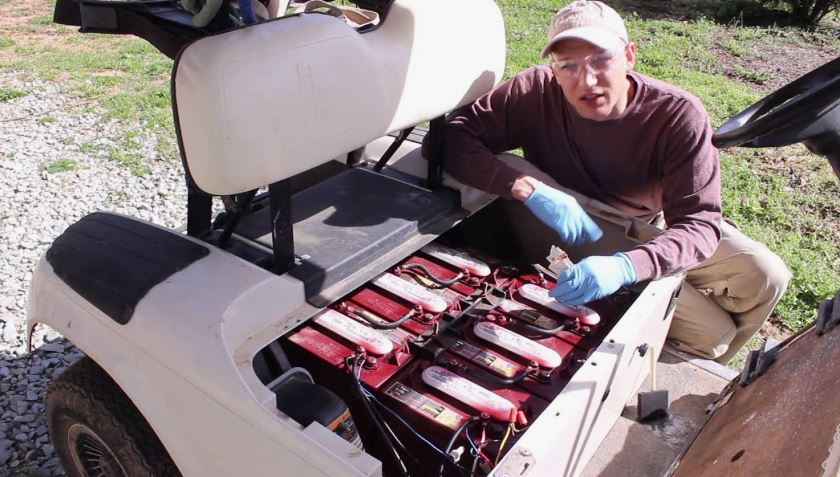Golf carts have come a long way from their humble beginnings, and one of the biggest game changers in recent years is the lithium battery. Compared to traditional lead-acid batteries, lithium options offer superior performance, faster charging, longer life, and lighter weight. However, like all technology, they can occasionally experience issues. If you’re using a golf cart lithium battery conversion kit, or considering one, understanding how to troubleshoot common battery problems is essential.
This guide walks you through professional-level troubleshooting techniques to help keep your lithium golf battery running at peak performance.
1. Understand the Basics of Lithium Batteries
Before diving into problem-solving, it’s crucial to understand how lithium batteries differ from lead-acid ones. Lithium-ion batteries feature:
-
Higher energy density for extended usage
-
Built-in Battery Management Systems (BMS) that regulate performance and prevent damage
-
Lower maintenance requirements
These features help make them reliable and efficient, but also mean that problems can sometimes be more complex to diagnose.
2. Common Signs of Battery Issues
Troubleshooting begins with recognizing the warning signs. Here are the most common symptoms that indicate your lithium golf battery may need attention:
-
Sudden drop in power or range
-
Battery not charging or taking too long to charge
-
Fluctuating performance during operation
-
Battery indicator not showing correct levels
Spotting these issues early helps prevent long-term damage and unnecessary replacements.
3. Start With the Charger
Often, the problem isn’t with the battery itself, but the charger. Here’s how to check:
-
Verify compatibility: Make sure your charger is specifically designed for lithium batteries.
-
Inspect connectors: Loose or corroded connectors can interrupt charging.
-
Test with another charger: If available, try charging with a different unit to rule out charger failure.
4. Check the Battery Management System (BMS)
Modern lithium batteries are equipped with a BMS that protects against overcharging, overheating, and other risks. If your battery isn’t performing correctly:
-
Reset the BMS: Many issues can be resolved by simply resetting the system. Disconnect the battery for a few minutes and reconnect.
-
Look for fault indicators: Some systems have lights or error codes that can guide you to the root of the problem.
-
Contact the manufacturer: For detailed troubleshooting steps, especially if the BMS has locked out the battery for safety.
5. Assess Battery Voltage
Voltage levels provide key insight into battery health:
-
Use a multimeter to measure the voltage across the terminals.
-
A fully charged 48V lithium battery should read around 54.6V.
-
If the voltage is significantly lower, it might be deeply discharged or experiencing cell imbalance.
If you’re using a rhino golf cart, make sure the kit includes a compatible voltage display or monitor. These are invaluable for keeping track of battery performance in real time.
6. Evaluate Environmental Factors
Environmental conditions can impact battery performance. Consider the following:
-
Temperature: Lithium batteries perform best between 20°C and 25°C. Extreme heat or cold can reduce efficiency.
-
Moisture and dust: These can interfere with connectors and BMS functionality. Keep your battery compartment clean and dry.
-
Storage practices: If not in use for extended periods, store the battery at 50% charge in a cool place.
7. Inspect for Physical Damage
While rare, physical damage can impact a lithium battery’s performance:
-
Look for swelling, punctures, or unusual odors.
-
Check wiring for fraying or disconnection.
-
Any sign of leaking or smoke means the battery is unsafe and should be replaced immediately.
8. Run a Load Test
If your battery seems fully charged but delivers poor performance:
-
Conduct a load test using your golf cart or a battery tester to see how it handles real-world demands.
-
If voltage drops too quickly under load, this may indicate internal resistance or aging cells.
9. When to Seek Professional Help
While many troubleshooting tasks can be done at home, there are times when you should consult a technician:
-
The battery won’t reset or charge after all troubleshooting steps.
-
Your BMS is signaling a fault you can’t identify.
-
The battery is within warranty—don’t void it by tampering internally.
Many battery manufacturers offer support services and can help with diagnostics or provide replacements when needed.
10. Preventive Maintenance Tips
Keeping your lithium golf battery in top shape means fewer problems in the future:
-
Charge regularly and avoid deep discharges.
-
Keep terminals clean and corrosion-free.
-
Avoid prolonged exposure to extreme temperatures.
-
Use only accessories approved by the battery manufacturer.
Final Thoughts
Lithium golf batteries are a significant upgrade in terms of efficiency, lifespan, and convenience. By learning to troubleshoot like a pro, you can maximize these benefits and avoid unexpected failures. Whether you’re already using a lithium setup or just installed a golf cart lithium battery conversion kit, knowing how to address common issues will keep your cart rolling smoothly for years to come.


